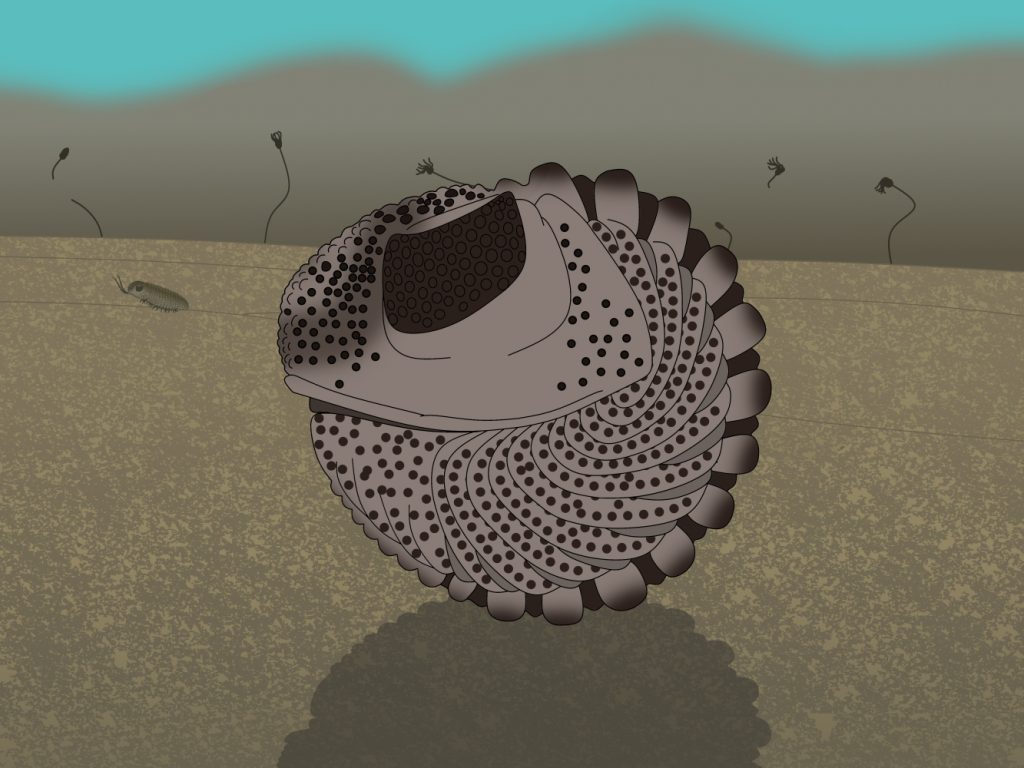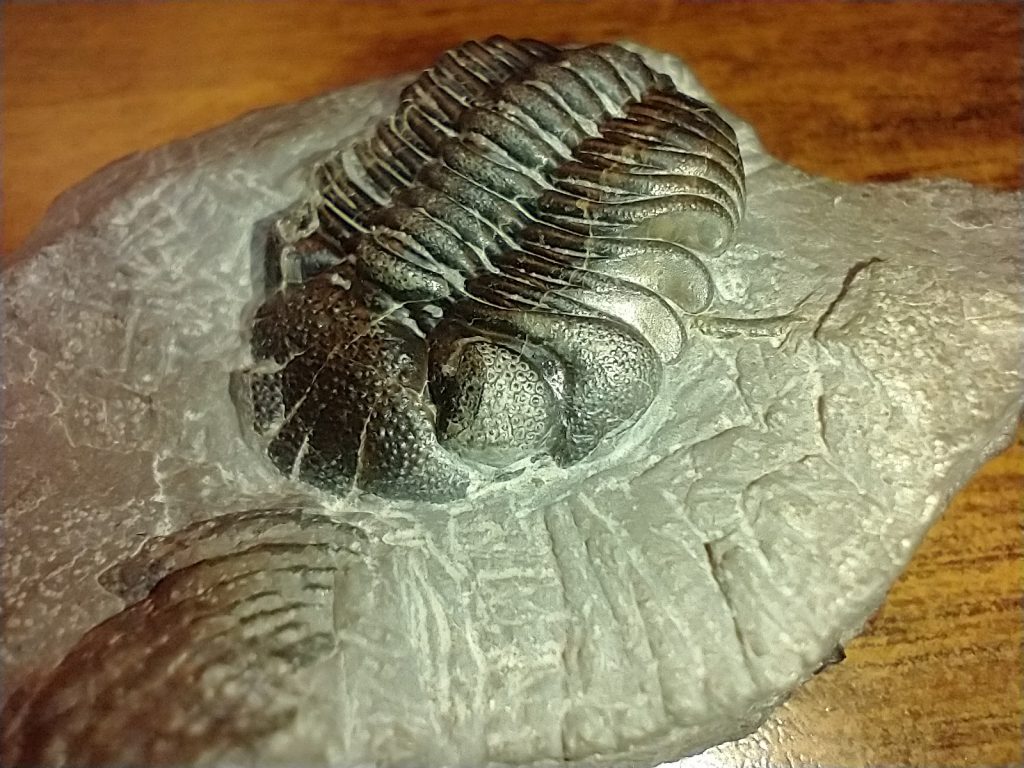
Predatory Trilobite
Eldredgeops was a very common trilobite in Devonian North America. It has been found in at least nine states, on top of having a range of 47 million years. What made it so successful? Acute eyesight, large size, and some good timing.
Eldredgeops was a large Phacopid trilobite, growing up to 4 inches (10 centimeters). It had a huge, inflated glabella, the bulge in between its eyes, covered in little bumps. The glabella housed the stomach of the animal. Under the head, there was a small, sharp-edged plate known as the hypostome. This acted as the trilobite’s jaws, covering the backward facing mouth.
What Eldredgeops is most known for is its eyes. Eldredgeops had large, compound eyes, but these were different from the eyes of insects. Many Phacopid trilobites had a unique eye structure, with fewer, larger lenses and simple corneas. This was called the schizochroal eye type, and it allowed for amazing vision, most likely in color. Schizochroal eyes let Eldredgeops perceive depth in only one eye, because each lens was separated from the others by a thin cuticle. Because the lenses were larger than usual, they also allowed for less pixelated vision. But what really sets these eyes apart is that each lens had an entire six-lens compound eye behind it. This meant that Eldredgeops had about 1200 sub-ommatidia (or lenses) in each eye! It is thought that this made schizochroal eyes especially sensitive to light, providing better vision. On top of all this, the eyes could swivel, giving Eldredgeops 360° wide vision. This, coupled with the large glabella (meaning a larger stomach), the shape of the hypostome, an the large size of this trilobite has led scientists to conclude that Eldredgeops was an active predator, hunting down other trilobites.

We have thousands of amazing fossils of Eldredgeops, and, surprisingly, many show color preservation! Eldredgeops was a pale color, with many dark spots. Its eyes were dark, possibly to absorb light (schizochroal eyes were efficient in low light), and its glabella was a cloudy brown. These spots, however, had something special about them. Multiple fossils of the same species had differently sized spots. They could likely grow and shrink at will, making the entire animal appear darker and lighter from farther away. This helped to camouflage Eldredgeops from other animals like possible prey items, again pointing to a predatory lifestyle.
In the late Ordovician period, most of North America’s Phacopids disappeared, for some unknown reason. At the same time, Eldredgeops started to migrate over from Europe, where they first appeared. When the first Eldredgeops got to North America, the native Phacopids were on demise. A little later, these native predatory Phacopids were gone, leaving an open ecological nich that Eldredgeops was more than fit to cover. There has been much debate over Eldredgeops and another genus, Phacops, but there is not enough time to talk about that here. You can read why Eldredgeops is its own genus here.
Eldredgeops could roll itself into a tight ball, called enrollment. Eldredgeops had powerful muscles that attached to its cephalon, or head, and the segments of its upper body. It could use them to dig its head into the ground, doing a sort of summer-salt. The trilobite’s pygidium, or tail, would lock into a grove under the trilobite’s cephalon. There were even grooves on the trilobite’s thoraxial segments, to aid in enrolling. This would present a hard ball for would-be predators like Michelinoceras. This helped Eldredgeops to live from 419-372 million years ago.
Sources
https://www.ncbi.nlm.nih.gov/pmc/articles/PMC3971714/
https://www.fossilguy.com/gallery/invert/arthropod/trilobite/phacops/index.htm
https://paleobiodb.org/classic/checkTaxonInfo?taxon_no=21555&is_real_user=1
http://www.trilobites.info/trilovent.htm
http://www.trilobites.info/trilointernal.htm
http://www.thefossilforum.com/index.php?/topic/47202-phacops-vs-eldredgeops/
http://www.fossilmall.com/EDCOPE_Enterprises/trilobites/atrilo55/atrilobites55.htm
https://penndixie.org/2019/06/05/an-eyecatching-trilobite/
https://www.ncbi.nlm.nih.gov/pmc/articles/PMC3971714/
https://www.nature.com/articles/s41598-021-98740-z
https://onlinelibrary.wiley.com/doi/abs/10.1111/j.1502-3931.1988.tb02063.x
The complete guide to fossils & fossil-collecting : an illustrated practical encyclopedia of over 375 plant and animal fossils from around the world and how to identify them, with over 950 photographs and artworks by Steve Parker
